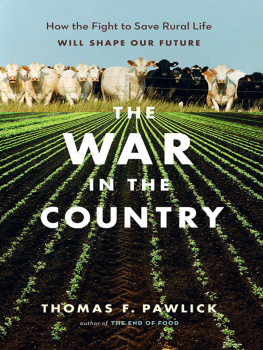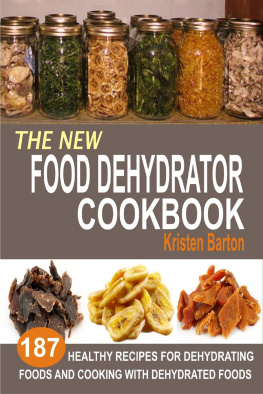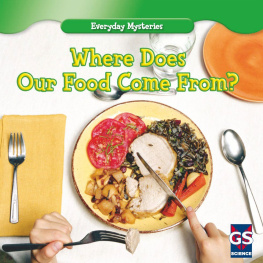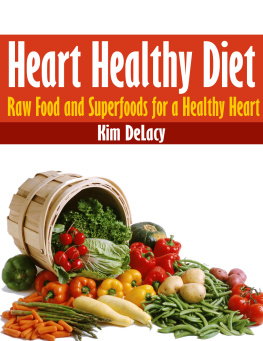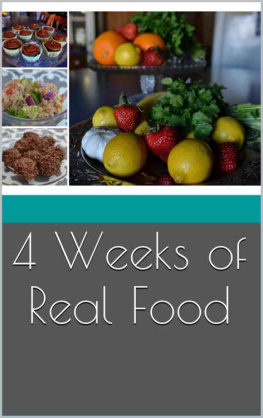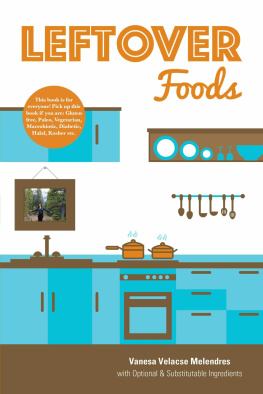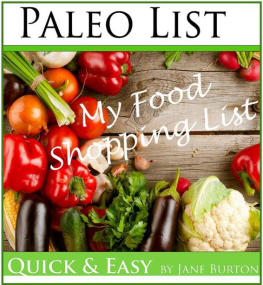THE TOMATO WAS THE LAST STRAW. Thats sort of a mixed metaphor, but how else can you say it?
I wanted to make a salad, a simple thing, just lettuce, tomatoes, cucumbers, some parsley, add a can of tuna, and toss it in vinegar and oil: a quick meal, so I could get to work on the stuff Id brought home from the office.
But when I went to slice the tomato, it was too hard.
Red, but too hard for eating. A tomato should be just starting to get soft and juicy for the flavor to be there. Hard tomatoes, unless youre frying them green southern-style, are bland and tasteless. They shouldnt crunch when you eat them.
Okay, pick another one out of the batch. Id bought four at the supermarket the day before and one of the others would be ripe.
I squeezed the second one. It was hard too. So were the third and the fourth. I looked at them. They were all bright red, not green. Yet they seemed nearly as tough and crunchy as so many raw potatoes.
Oh well. Put them back on the counter. In a day or two theyd be ripe enough.
But a day or two later, they werent.
A week later, they were still hard.
So I put them on the windowsill, directly in the sun, to ripen. Two, three days went by, then a week.
Still hard.
This isnt possible, I thought. Tomatoes are supposed to ripen in the sun. They are supposed to get soft and juicy so that when you slice them for your salad they taste yummy.
Not these tomatoes.
Im a stubborn man. I was determined that no mere vegetables (actually tomatoes are classed as berry fruits) would get the best of me. I would outwait them, at least for a little longer.
But it did no good. They were as red as little fire engines when Id picked them off the supermarket shelf and taken them home. But all these days later they were still not ripe. They looked ripe. No tomato could look riper. But that was all. They were not soft and juicy, rich with flavor as they ought to be after all that sunlight and patience.
One had a tiny dark spot, where some sort of rot may have been starting, and another had mold around the mark where the stem broke off, but it still wasnt soft.
Frustrated, I took one and went outside, where a wooden board fence separated the back patio of my city condo from my neighbors. You hard little devil, I thought. Im going to do with you what vaudeville audiences used to do with tomatoes. I threw it against the fence, expecting it to splatter like tomatoes used to splatter on singers with off-key voices and stand-up comics who told bad jokes.
It bounced off, undamaged, like a not-very-springy, red tennis ball.
I picked it up and threw it again, this time hard. It hit the fence, crackedbut did not splatter. When I looked inside, I found that some of the seeds inside the tomato had actually sprouted.
And that was the last straw, or tennis ball, or tomato.
My attention was well and truly fixed. As Sherlock Holmes would put it, the gamein this case the berry fruitwas afoot. Mixed metaphor number two.
A SHELTERED LIFE
By way of explanation here, so you wont think of me as a fanatic: At the time I met these rubbery North American supermarket tomatoes Id just returned from six years of living in Italy, where the tomato is a kind of dietary deity. Although supermarkets exist in places like Rome or Milano, theyor at least their fresh produce sectionshavent really caught the average food-worshiping Italians fancy. Most people still buy fruit and vegetables in open, neighborhood farmers markets, where produce is displayed in mind-boggling variety under colorful awnings, out in the sunny piazza. The quality is mama mia ! Who can describe?
Before that our family lived on a small farm in rural Canada, where we raised our own home-garden tomatoes, picked them off the vine, and ate them fresh in the field.
It had been a sheltered life. This episode with the tennis balls was a shock.
On Saturday, I went back to the supermarket and gave the tomato shelf a closer look. There were three bins of tomatoes: one labeled field grown, another greenhouse, and a third full of elongated pasta tomatoes. The greenhouse tomatoes looked so exactly alikeall the same size, perfectly round and all exactly the same, uniform red colorthat it was almost unreal, like maybe they were wax tomatoes cast from the same mold for decorative display.
But they werent wax.
The pasta tomatoes also looked exactly like each other: same size, same shape, precisely the same color, like tiny Italian soldiers in red uniforms.
Only the field tomatoes had any differences. They were the same size and shape, but some had a slight hint of yellow or green around the stem scar, where others were totally red. I bought some of the greenhouse and some of the field tomatoes, and took them home.
Both types were hard, and by now I knew better than to hope for any changes. I cut them up for salad, the knife crunching through their tough outer walls (what botanists call the pericarp wall). I was surprised by how thick these were, and went for a ruler: more than three-eighths of an inch. In a later trip, to a different supermarket, I found one with walls just short of half an inch thick. The greenhouse tomatoes tended to be thinner.
When I ate them well, lets just say they tasted vaguely like tomatoes.
But comparing them to what the Romans eat, or to what our garden used to produce every summer, was like comparing carbonated cat pee to a rich, foaming Guinness stout. They were from a different planet. A hard, red, rather bleak planet.
Why? What had happened to these tomatoes?
It took some searchingthrough libraries, the Internet and the horticulture faculties of several universitiesbut eventually a story came together: the story of the slow ruination not only of the North American tomato, but of most of the good, tasty, nourishing food of all kinds that Americans and Canadians once ate, and took for granted.
But more on that later. Lets stick with tomatoes for now.
FOOD TABLES
Periodically, the United States Department of Agriculture (USDA) publishes a set of tables, generally referred to as food tables, although different versions have had different formal titles. These list a wide variety of foods, from meat, fish, and grain to fruits and vegetables, giving measures of their actual content in terms of vitamins, minerals, protein, and other substances that can play a part in the human diet. Researchers and specialists in nutrition refer to them frequently as a base measure for making general comparisons.
The first of these was put out by the USDAs Dr. W. O. Atwater, a pioneering food researcher assisted by fellow scientist Charles D. Woods, under the title The Chemical Composition of American Food Materials (1896). This early work, completely superseded by later research, looked at a relatively small number of foods, and tested for an even smaller number of ingredients. Only six measures in it compare roughly with later, much more detailed tables for untreated (namely, not peeled, canned, or otherwise processed) tomatoes. As Atwaters sample sizes may have been different than those used today, accurate comparison is actually impossible.
Later USDA publications, however, generally give figures for either 100 grams of edible portion of the food in question, or for the nutrients in one pound of a given food item. Thus, they can be compared. And comparisonseven between fairly recent tablesare more than enlightening. They are shocking.
The most recent set of tables, posted on the USDA website for 2002, is titled USDA National Nutrient Database for Standard Reference, Release 15 . shows that 100 grams of todays average red, ripe whole tomato contain 22.7 percent less protein than a tomato would have if purchased by American shoppers in the year President John Kennedy was murdered in Dallas.


